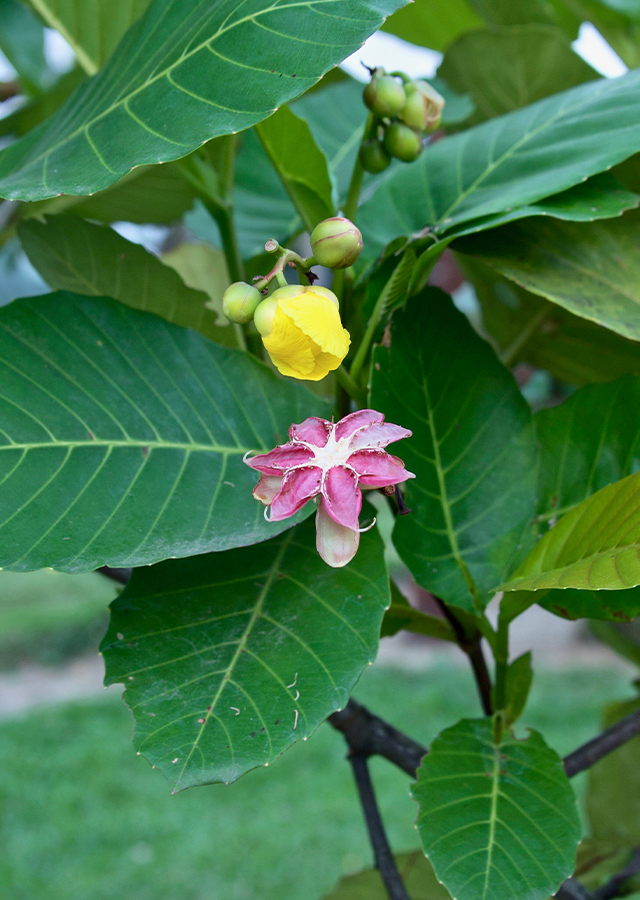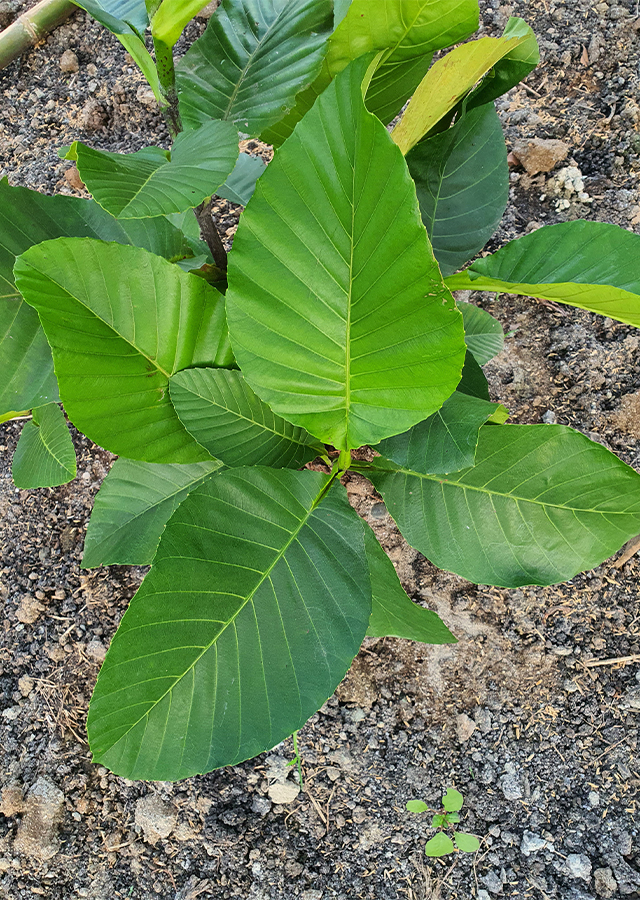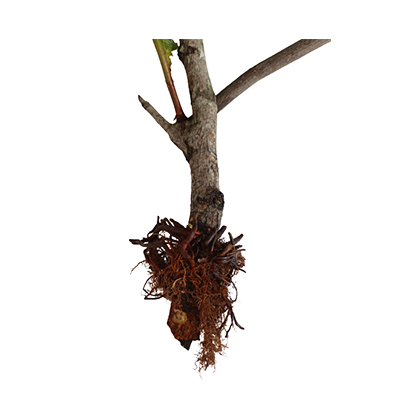Shrubby Dillenia
Dillenia suffruticosa (Griff.) Martelli
Dilleniaceae
Location in our garden
Principal



Synonym
Dillenia burbidgei (Hook.f.) Martelli
Wormia burbidgei Hook.f.
Wormia revoluta Miq.
Habitus
Trees. Perennial, large shrub, growing up to 10 m tall.
Part Used
Leaves
Roots
Growing Requirements
Full Sunshine
High Rainfall
Habitat
Wetland
Riverbanks
Forest
Overview
The species is native to Indonesia (Kalimantan and Sumatra), Malaysia and Singapore. The plant is harvested from the wild for local medicinal use. Often grown as an ornamental, the species naturalizes easily and has become abundant in some areas outside its native range, such as Jamaica.
Vernacular Names
Vernacular names: Simpor bini (Brunei Darussalam), Simpoh air (Malaysia), Diyapara (Sri Lanka), San yawa (Thailand), Plo sbat (Cambodia).
Agroecology
It grows wild on a range of soils from sandy to clayey from the sea level up to about 500 m of altitude, from wet to well-drained. Pioneer species grow at the margin of the forests, among the mangroves, in swampy areas, along the banks of the water streams.
Morphology
- Roots - deep taproot.
- Stems - with lignified basal branches and herbaceous upper ones.
- Leaves - alternate, stalked, have leaf blades that are 12.5-38 by 6.5-25.5 cm, with prominent, parallel secondary veins.
- Flowers - 8-13 cm wide, with 5 bright yellow petals that are 4-5 by 2.5-3 cm each. Each flower is open for one day only, between 2 flowers of the same raceme a difference of around 3-4 days.
- Fruits - splits open into a star when it ripens to reveal up to four seeds.
- Seeds - scarlet aril.
Cultivation
Propagated by seeds or stem cuttings.
Chemical Constituents
Saponins, alkaloids, triterpenes, steroids, polyphenolic compounds, flavonoids.
Traditional Medicinal Uses
- Studies have shown antioxidant, antimicrobial, antitumor, and antivirus of dengue activity from the leaf extract and cytotoxic and antioxidant activities from root extract.
- The oral intake of aqueous root extracts has successfully reduced breast cancer. The twigs and leaf stalks can be broken off, and the exudate applied to an external wound, while the young pounded leaves are used as poultice to stop bleeding.
- Traditionally, the leaves and roots are used as a wound healer and to relieve fever, treat rheumatism, reduce cholesterol levels in the blood, in postpartum treatment, and as an astringent
- In Malaysia, fruits are used to treat cancerous growth and leaf to promote wound healing, treat fever, and relieve rheumatism.
Part Used
Reference Sources
Yazan, l.S., and Armania, N. 2014. Dillenia species: A review of the traditional uses, active constituents and pharmacological properties from pre-clinical studies. Pharmaceutical Biology, 52:7, 890-897.
Yakop, F., Hamid, M.H.S.A., Ahmad, N. ., Majid, A.M., Pilai, M. K., & Taha, H. (2020). Phytochemical Screening, Antioxidant and Antibacterial Activities of Extracts and reactions of Dillenia suffruticosa leaves. Malaysian Applied Biology, 49(1): 121–130.
Singapore National Parks. Flora & Fauna Web: Dillenia suffruticosa (Griff. ex Hook.f. & Thomson) Martelli. https://www.nparks.gov.sg/florafaunaweb/flora/2/8/2847. (Accessed on 18-12-2021)

